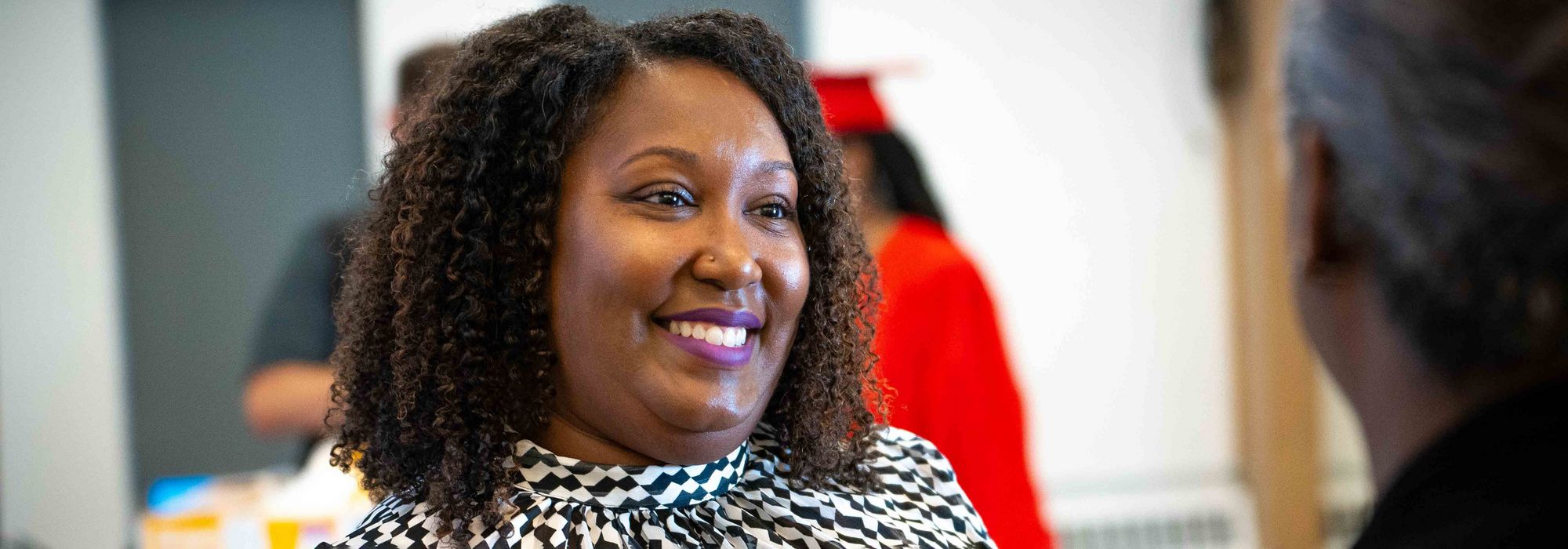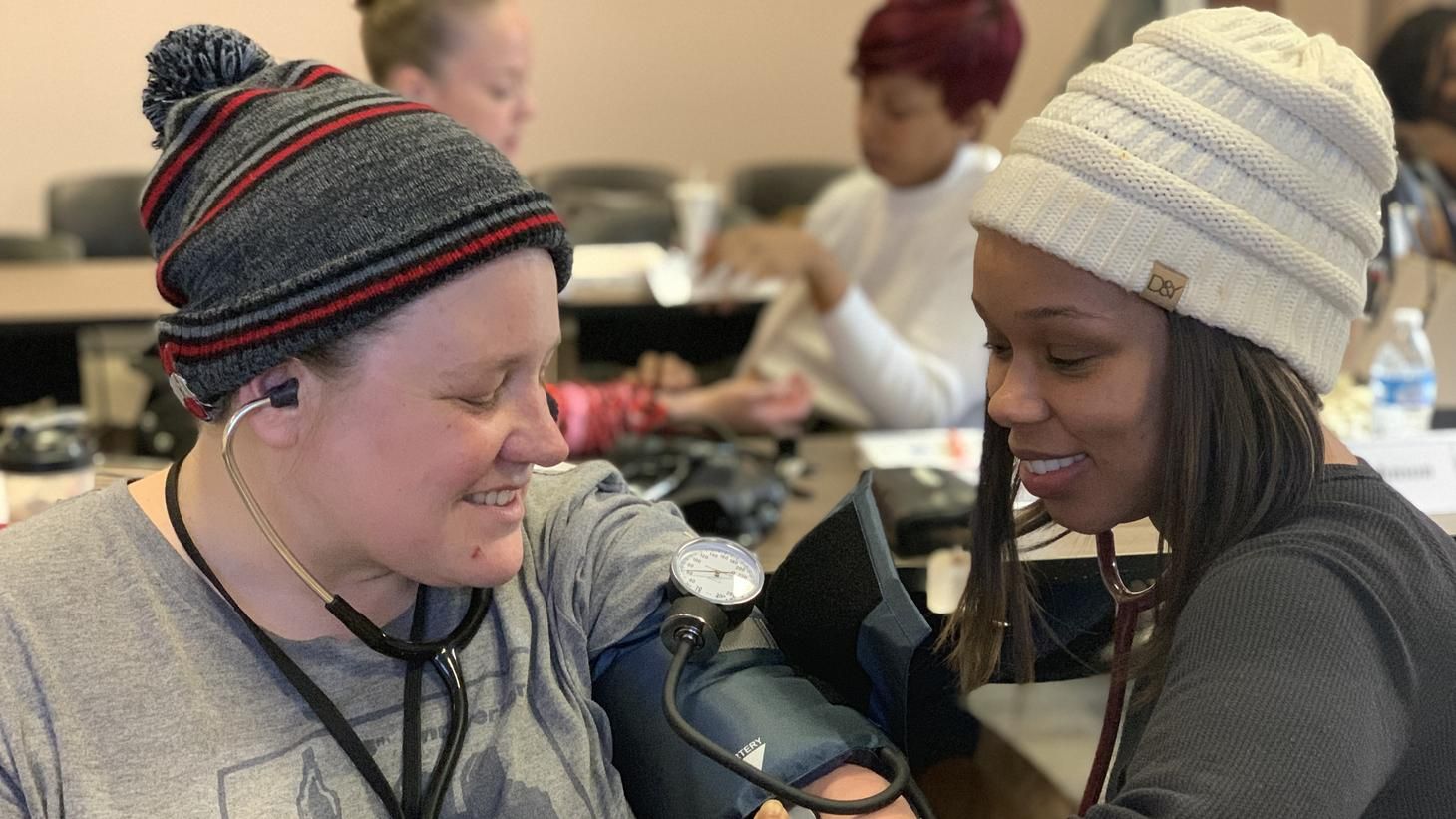
Shaunta Stanford and the Community Health Worker Training Program
by Sarah Posten and Susan Neale
Shaunta Stanford, EdD, APRN-CNP, ANCP-BC, CCRN, was on her way to receive an Excellence in Community Engagement award at the Engagement Scholarship Consortium Conference in Michigan when she spoke with us about her work as director of the Community Health Worker Training Program (CHWTP) at the College of Nursing. This community outreach program offers a workforce development course for people who want to become community health workers (CHWs) – front-facing public health workers who typically come from the community they want to serve. For the students, the program can be a bridge out of poverty and an opportunity to enter the healthcare field. Many go on to work in harm-reduction for substance abuse, mental healthcare, or in primary healthcare sites to work with patients, assisting with their barriers to health.
Stanford pointed out that CHWs are a great assistance to healthcare providers, going beyond the hospital and into the patient’s home. “They are able to reach patients where I cannot as a practitioner. I’m confined to the walls of the hospital because the patient comes to me, but a CHW goes to the patient.” Sometimes, a patient’s barrier to optimal health may be something they don’t want to admit to their healthcare provider, such as not being able to afford a prescription. CHWs can connect patients to resources in the community or the city that can help them with the issues affecting their health, whether it’s finding employment, transportation or childcare, or connecting with public assistance for benefits and services.

Stanford, who has been a trauma NP for 13 years, also teaches in the Critical Care nursing track and still works a few times a month as a nurse practitioner at Grant Medical Center’s Level I trauma center to maintain her skills and proximity to the bedside. “It has really been a wonderful experience,” she said. “I am encountering people on the worst day of their lives – nobody plans to get into a car accident.” It’s gratifying to help someone in that moment when their life has changed in the blink of an eye, she said. “I love what I do. It’s not easy, but I love it.”
Stanford’s research focuses on trauma and resiliency in African American male gunshot survivors. As a nurse practitioner on the trauma team, she said, “I can help to put that person back together again – and then they’ll be released from the hospital. But we haven’t addressed any of the psychosocial or socioeconomic issues that occur and why that violence happened in the first place.” CHWs can be impactful by addressing issues such as lack of employment, resources, education or safety. Some CHWs are interventionalists who deal with mental health and addiction issues.
On average, 75% of program participants receive government-based assistance. Recently, Stanford was able to add a resource coordinator to the team who supports students by providing or connecting them to wrap-around services such as childcare and transportation, increasing student retention. “They are showing up, and we are trying to support them,” she said. The course includes work in the community – in 2022, CHWTP students completed more than 40 events and engaged with more than 2,000 community members. Stanford related a success story of a student who was hired as a CHW by Franklinton Development Association, who were impressed by her work.
The program helps its students enter the workforce by connecting them with potential employers before graduation and coaching them with soft skills, resume preparation and mock interviews. Six to nine months after they complete the course, they are surveyed to see how they’re doing with employment.
“One of the best days I have with them is at graduation,” Stanford said. “We have to keep getting bigger space because so many people show up to support them.” After the success of completing the program, the students are often motivated to pursue other healthcare certifications, and many dream of becoming nurses. “I’m hopeful,” Stanford said, “that now that we are making more avenues for people to become nurses, we can tap into that pipeline.”
In this Issue
- Meet Dean Karen Rose
- Buckeye Nursing Story Slam
- Beth Steinberg and Buckeye Paws
- Buck-I-SERV Goes to Ghana
- A Buckeye Nursing Family
- Grants Roundup
- When Microaggressions Affect LGBTQ Health
- In the Research Realm with Emily Rice
- EBP National Summit
- Shaunta Stanford and the Community Health Workers
- Joy and Milestones
- Alumni in Action: Chris Connors

